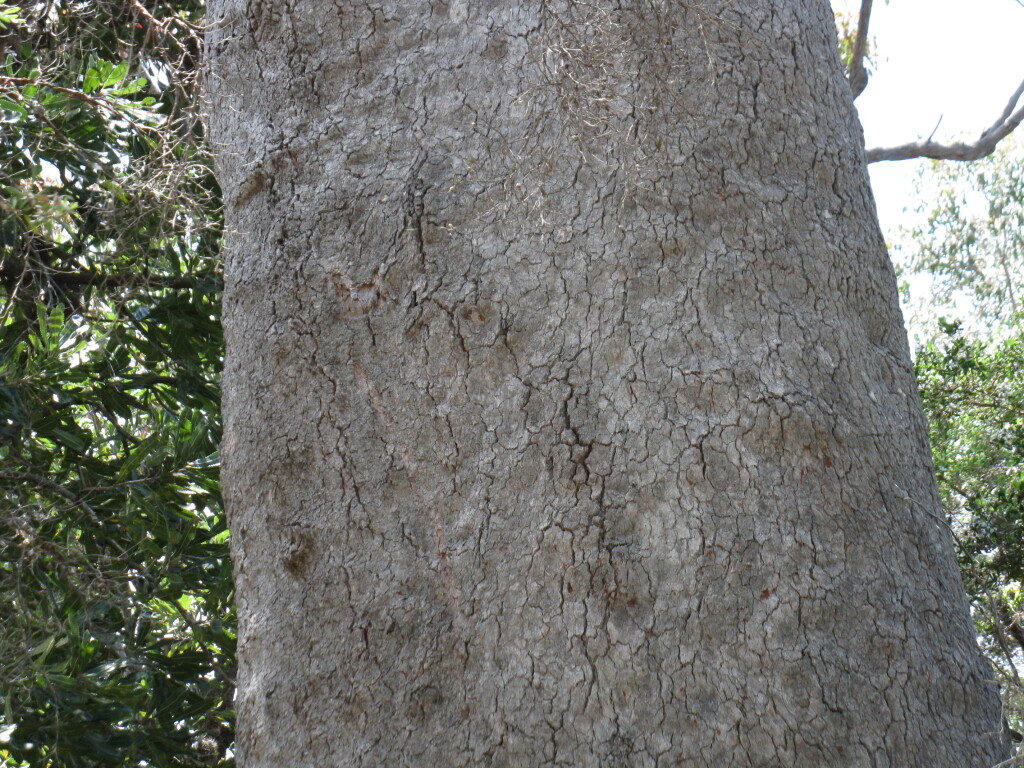Corymbia gummifera
(Gaertn.) K.D.Hill & L.A.S.JohnsonTree to 35 m tall, rarely a mallee; bark rough on trunk and branches, tessellated. Juvenile leaves petiolate, opposite for few pairs, then alternate, elliptic to broadly lanceolate, some peltate, to 23 cm long, 7.5 cm wide, early leaves hairy; adult leaves petiolate, alternate, broadly lanceolate to lanceolate, 10–16 cm long, 2–5 cm wide, discolorous, dark green above; with regular, wide-angled, pinnate side veins; reticulation very dense, with small island oil glands. Inflorescences compound, terminal; peduncles to 3 cm long, 7-flowered; buds pedicellate, clavate, to 1.1 cm long, 0.7 cm diam., scar absent; operculum usually pointed; stamens inflexed; anthers versatile, cuneate; ovules in 4 vertical rows; flowers white or creamy-white. Fruit pedicellate, urceolate, to 2 cm long, 1.8 cm diam.; disc vertically descending, lining tube; valves deeply enclosed; seed red-brown, boat-shaped, lacking a terminal wing, flanged along the edges. Flowers Jan.–May.
VVP, GipP, CVU, DunT, EGL, EGU. In Victoria on flats and low hills near the sea, east from Wingan Inlet.
The only rough-barked bloodwood in far south-eastern Australia. The wingless seeds ally it with the two wingless-seeded bloodwood species of south-western Western Australia, viz. C. calophylla and C. haematoxylon, which occupy similar infertile coastal sandy sites.
Brooker, M.I.H.; Slee, A.V. (1996). Eucalyptus. In: Walsh, N.G.; Entwisle, T.J., Flora of Victoria Vol. 3, Dicotyledons Winteraceae to Myrtaceae, pp. 946–1009. Inkata Press, Melbourne.
 Spinning
Spinning

